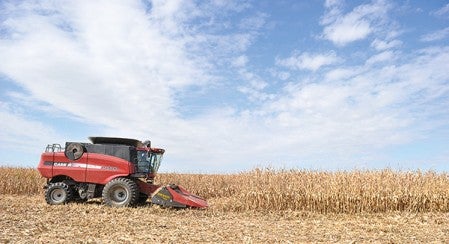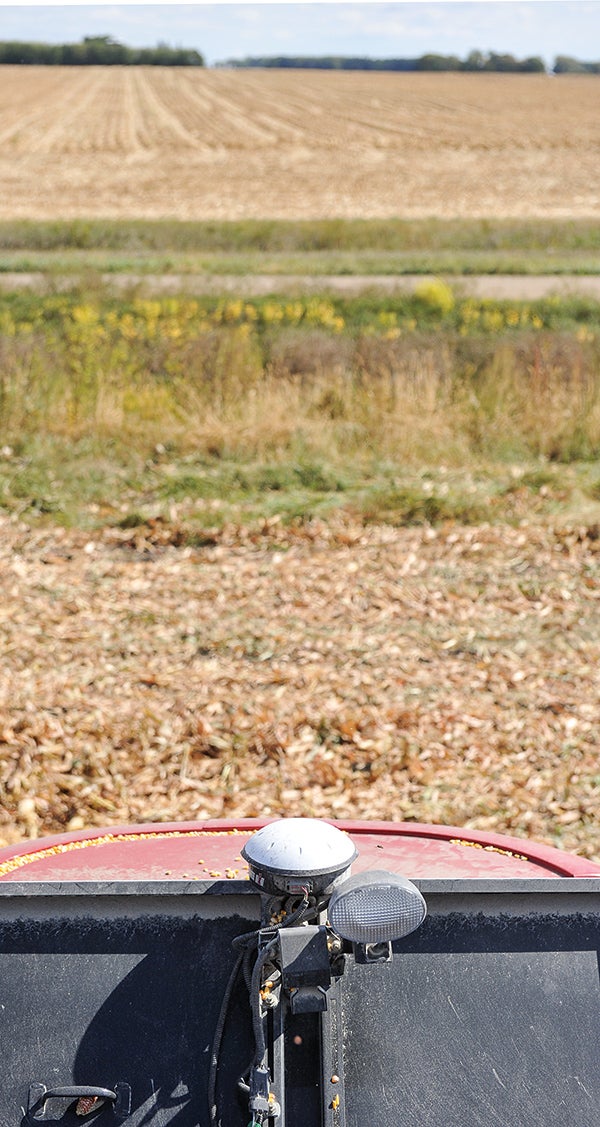Future on the frontier
Published 1:43 pm Tuesday, February 26, 2013
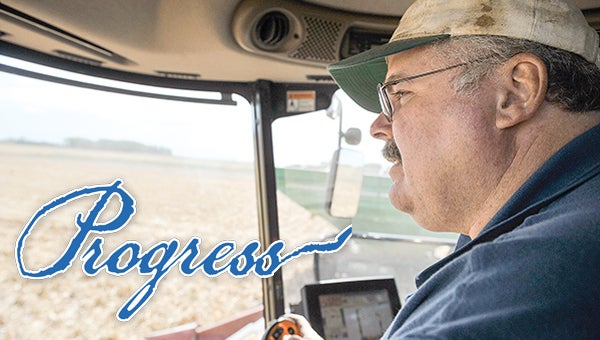
Jim O’Connor harvests his field southwest of Blooming Prairie last fall. Like many farmers, O’Connor has invested in technology that improves planting and harvesting. — Eric Johnson/Austin Daily Herald
Technology has bridged the gap between the old ways of farming and the future
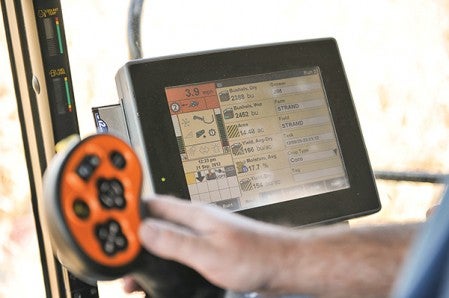
A readout gives Jim O’Connor a constantly upgrading stream of information as he harvests a field southwest of Blooming Prairie this fall.
—This story originally appeared in Progress 2013. Pick up a copy at the Herald office, 310 Second St. NE.
The combine revved louder with a higher pitch as it turned into another swath of corn. Jim O’Connor dropped the head and rumbled forward in his 2006 Case IH combine.
A view from the road suggested he only needed to steer between the rows. Simple enough. But harvesting isn’t quite what it was decades ago, when Jim first took the helm in a combine at age 11.
Inside the cab, both Jim’s brain and his onboard computer were bombarded with information. He was multitasking, just like countless farmers across the Midwest that day.
“A lot of people collect the data, but it’s all what you do with it,” Jim said, as his eyes shifted back and forth from the ground to the computer.
A good day for picking
Despite an extremely dry year, that October morning was a perfect day for harvesting — teetering on that brink of almost warm just southwest of Blooming Prairie. Leaves and debris flew in the air. Jim’s son in law, Sam Wencl, pulled a wagon just a few feet from the combine. Craig Strand, whose family owns the cropland, shuttled a truckload of corn to the elevator as the hour passed.
Inside the combine cab, the computer screen just to the right of the driver’s seat was filled with data about moisture content, continuous yield information, rate of harvest, hopper level, head height, fuel consumption and other statistics.
One could tell it was indeed dry, as indicated by the moisture content on the screen. Right there, Jim already knew the corn wouldn’t have to sit for weeks in a dryer bin. Jim stopped at the end of the pass — joystick in one hand — and unloaded his hopper into Wencl’s wagon. The two repositioned, and Jim crept into another pass of corn, scanning — field, screen, field.
Usable data
Just like with a computer or camera, Jim holds all his information on removable memory cards.
“It’ll hold all the information for the whole year,” he said.
That’s where technology offers significant advantages. Jim can look back and see not only what his yields were in every field, he can see which area of each field did better or worse. Last year, farmers reported crop yield fluctuations all the way from 0 to more than 200 bushels per acre in one field. Jim and those farmers use that data to apply more or less fertilizer and seeds each spring.
Like any tech-savvy youngster would, Jim’s son, Patrick O’Connor, learned the concepts of the new onboard features. That still required hours of familiarization with new equipment, however.
“As far as the combine and stuff, it probably took a good five or 10 hours just to figure out how things work with monitors and making sure everything is what it needs to be,” Patrick said. “It can mean a lot of time on the phone with the tech guys from the dealership.”
But the features may be improving faster than it takes to figure them out. Yield monitoring is almost becoming old technology for the O’Connors and many other farmers. Jim suspects at least 90 percent of farmers now use GPS technology to map their fields. In 2011 the O’Connors bought a new planter with more features, as well.
“In the spring, when we are planting, that is even more complicated yet, as far as all the technology we are using,” Patrick said. “That’s kind of my area of focus.”
Patrick said the new planter has features such as variable rate planting. Furthermore, computers can now talk to planters and shut off rows that may be overlapping. By combining GPS coordinates, an auto-steer system and computers that communicate with farm machinery, farmers can achieve sub-inch accuracy. They apply fertilizers and seeds to within an inch of where they want them. Sure, the auto-steer aspect sounds nice, but that’s not just for convenience. The whole key is efficiency.
“I see it all as improving efficiency, where you can maximize profits through reducing costs, whether it be labor, fuel inputs, whatever,” Patrick said.
With that type of accuracy, farmers inevitably use less fertilizer, fewer seeds and save time, so they can save on input costs.
A long day of picking
With all that technology, GPS mapping for every field and auto-steering, Jim’s day of picking corn may have seemed a little easier. But he’s not using auto-steering on his combine. There are risks. The operator still plays a role, indeed.
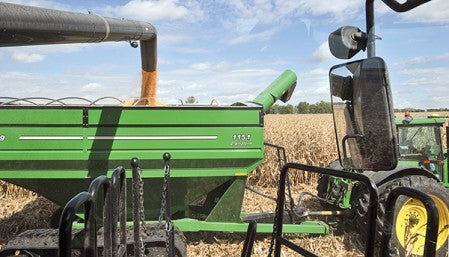
Corn is transferred from combine to wagon as Jim
O’Connor harvests his crop. Technology allows farmers a more efficient harvest and helps them reach better yields.
Jim tried to pry under the stalks previously flattened by strong wind, so he lowered the head, dangerously close to the ground as he crawled through the field. Here, an auto steer system would do no good. With precision, Jim slid the teeth under the stalks and turned them upward just enough.
“There’s no monitor to tell you how to water ski,” Jim said. “The same thing with the combine: You just have the feel.”
The stalks evenly slipped into the teeth, and the ears disappeared into the combine. It worked quite well. There was no time to look at the monitor now, though. While eyeing the ground closely, Jim discussed the rigors of such a process.
“Yesterday we ran a rock in it,” he said, “That was no fun.”
Despite all the autonomous machinery, no machine will tell a farmer where the rock is — not yet, anyway. Like Jim says, picking rock is still a job every kid should have at least once.
“All the automated stuff is nice, but somebody has got to dig the rock out,” Jim said. “Somebody has got to put the grease on.”
Patrick still knows plenty about digging objects out of fields, more than just rocks, too. Some people use cropland to hide their trash.
“Someone’s got to pick that stuff up, and usually it’s me,” Patrick said. “It’s no fun. That’s one part of farming that I really hate, especially the tires.”
Jim spoke about his irritation with trash in his fields. He feels the same way about the tires, too, perhaps more. Last year, the combine ate one. It took a pickup truck and a chain to remove it.
Not more than a few minutes after discussing the ordeal, it was as though Jim had somehow angered the crop gods … a rock.
“Just like that, a $250,000 combine comes to a screeching halt,” Jim said while reaching for the door. He knew what had happened.
The bells and whistles sounded — the quintessential sound that indicates something clearly is wrong. The combine automatically stopped as a safety measure. Jim climbed down the ladder to investigate. Though he hoped to remove the rock before it passed through the head, it was too late. Still, the combine has its own defenses. The machine detected the object before it ran through all the inner workings and safely stored it in a separate bin. The farmer wins some and loses some. This time was a tie.
Jim climbed back into his seat. Everything seemed OK. The engine revved, and the combine lumbered forward again as it toppled the stalks, 10 rows at time.
The future of future farming
At the end of a long day, people like Wencl, Strand and the O’Connors have done more than just pass responsibilities to the machines. They have to know their equipment, stay current on ever-changing features and deal with occasional headaches.
Still, some wonder if or when that day will come, when machines actually take over operation. Jim doesn’t see that happening, at least not anytime soon. Regardless of how far technology goes, he knows the farmer will always play a role, and will want to.
There is no doubt equipment has made aspects of farming better for aging farmers. Yet the high-tech features imply farming could become a young-man’s game.
“I think technology as a whole is going to get more complicated as we go down the road,” Patrick said. “And one thing that concerns me about this whole farming career and the industry in general is the lack of young farmers.”
Few people wake up and simply decide they are going to be farmers; they grow up on farms, like Patrick. And Patrick knows the average age of farmers is increasing. More people are moving to urban areas, and fewer youngsters are staying on family farms. To start farming from scratch isn’t feasible, especially as land prices steadily increase.
“Young people just absolutely cannot afford to compete,” Patrick said. “I don’t know how that problem can be fixed. I’m 22 years old, and that’s something I deal with every day. How, can I deal with farming personally?”
Patrick knows he and his peers won’t go far in farming without significant assistance from their elders. But at the same time, he and those budding, young agriculturalists have a few chips on their side, as they will invent, decipher and employ the farming practices of decades to come.


